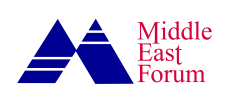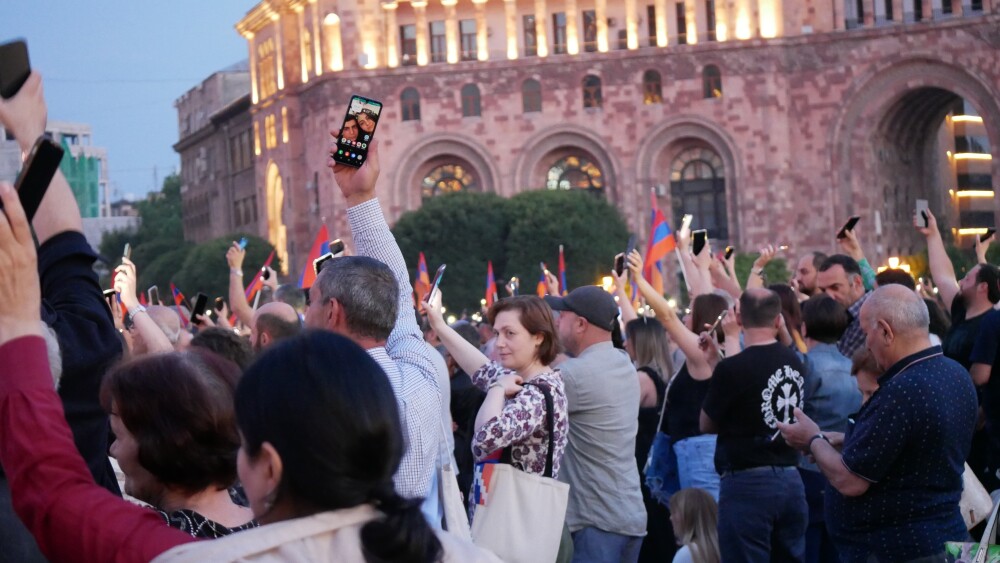Armenian Prime Minister Nikol Pashinyan is insistent: The Artsakh [Nagorno-Karabakh] representation in Yerevan should disband. The Armenian government has launched a court process to repossess the property, a stately old villa that in Soviet days housed a theater; many Armenians from Nagorno-Karabakh believe Pashinyan will then turn it over to Azerbaijan as its new embassy in Yerevan. Such a move would confirm in their view the disdain that Pashinyan feels for the Nagorno-Karabakh community.
The relationship between Armenia and Nagorno-Karabakh is complicated. Both the Persian and Russian empires dominated the region for centuries. In exchange for duties local rulers paid to the shah or tsar, they governed autonomously. Armenians lived across the region, and Turks along the Caspian shore.
Contemporary statistics show the mountainous region to be between 75 and 95 percent Armenian.
In 1918, both Armenia and Azerbaijan gained independence as the Russian Empire collapsed into revolution and civil war. Nagorno-Karabakh’s status was unclear; both the newly independent states of Armenia and Azerbaijan claimed the mountainous territory, though. Contemporary statistics show the mountainous region to be between 75 and 95 percent Armenian; much of the Azerbaijani influx occurred decades later as Soviet authorities sought to gerrymander the region. While Joseph Stalin assigned Nagorno-Karabakh to Azerbaijan, technically it was an autonomous oblast. As the Soviet Union teetered, the local parliament petitioned Moscow first to reassign them to Armenia and, barring that, to recognize them as their own republic. The Kremlin at first ignored and then rejected their demands. As Moscow’s rule collapsed in December 1991, the region held a referendum in which more than 99 percent voted for independence.
At first, the Armenian-populated region called itself the Nagorno-Karabakh Republic, though it later changed its name to Artsakh, the historic name of an Armenian kingdom that occupied the area in the early eleventh century. While Artsakh declared its independence, no country—even Armenia—recognized it. Armenia did not want to provoke Azerbaijan and instead sought to negotiate resolution of conflicts through the Organization for Security and Cooperation in Europe’s multilateral Minsk Process. Armenia also long argued that Azerbaijan should negotiate directly with Artsakh, rather than demand that Armenia negotiate about territory it did not claim as its own. Driving between Armenia and Artsakh, as I did in November 2020, was to cross an international border, albeit a relaxed one. It was analogous to crossing between the United States and Canada; there was a visa check to enter Artsakh, but the entire process was friendly.
Artsakh saw itself akin to Kosovo, and hoped to follow the Kosovo model. It established its own democracy, and held numerous elections. While Artsakh relied on fuel from Armenia, its agriculture sector thrived. It ran schools, universities, and public services and, unlike Azerbaijan, held repeated, contested elections. In 2020, Artsakh held general elections, with a 72 percent turnout in the first round and 45 percent in the second round. Arayik Harutyunyan won a five-year term as president, but resigned as Azerbaijan’s invasion loomed. Azerbaijan demanded that Artsakh dissolve, and the acting president said he would do so, but the Artsakhi government instead established a government-in-exile based in Yerevan.
Artsakh was not some fictional independence movement; it had operated as an independent state for more than a quarter-century.
The logic was not only symbolic, but practical. Artsakh was not some fictional independence movement; it had operated as an independent state for more than a quarter-century. Its citizens became refugees; few had Armenian citizenship, and many Armenian bureaucracies rejected Artsakhi licensing to protect their own seniority. Outside of the Armenian province of Syunik, whose governor is more foresighted and cut through bureaucracy to equate and make interchangeable Artsakhi and Armenian licensing, Artsakhi doctors and teachers find themselves unemployed for lack of Armenian degree recognition and credentialing. While, in theory, the Armenian government helped Artsakhi refugees find housing, in practice the government provided only around 50 families with vouchers; the rest caught in Armenia’s sometimes Soviet bureaucracy. Many Armenians also resent Artsakhis, either as backward, or due to jealousy over the subsidies independent Artsakh previously received.
Pashinyan long was fine with keeping the Artsakhis unintegrated: Politically, he feared their anger should they be allowed to vote in Armenian elections. After all, not only Artsakhis but most Armenians as well blame Pashinyan’s government for intelligence failures leading up to the 2020 Azerbaijani surprise attack.
If Artsakh’s representation dissolves, more than 100,000 people lose representation. Pashinyan, however, refuses to allow the Artsakhis to hold elections. He argues that such a democratic exercise would be provocative and could lead Azerbaijan to invade Armenia. Such victim blaming is morally inverse; the only person responsible for Azerbaijani aggression is its president, Ilham Aliyev, not his victims. If Pashinyan believes in the peace agreement for which he advocates, he should not use the threat of Azerbaijani military action to punish opponents.
Nor is precedent on Pashinyan’s side. Tibet remains a government-in-exile. Does Pashinyan think the Dalai Lama is a warmonger? From 1940 to 1991, the Republic of Lithuania maintained a government-in-exile with diplomatic relations while its territory remained under Soviet occupation. Czechs and Slovaks declared the future Czechoslovakia in 1918 from Pittsburgh, Pennsylvania, where many were in exile from the Austro-Hungarian Empire.
Dissolving Artsakh’s government and refusing to allow Artsakhis to participate in new elections undercuts democracy in another way: While Armenia does not recognize Artsakhis as citizens and denies them political representation, Pashinyan negotiates on their behalf and claims a right to sign agreements binding upon them. Legally, Artsakhis now and in the future can reject any commitment Pashinyan makes as not binding upon them, much the same way that Greenlanders can ignore U.S. President Donald Trump.
Freedom House now ranks Azerbaijan along with North Korea, Myanmar, and Eritrea as among the world’s most totalitarian countries.
Herein lies the problem: Azerbaijan is less stable than diplomats acknowledge. Under Aliyev’s multidecade rule, he has eviscerated the country’s bureaucracy. This is why Freedom House now ranks Azerbaijan along with North Korea, Myanmar, and Eritrea as among the world’s most totalitarian countries. Transition will be tough. When Aliyev dies, there will be a vacuum. His son is mentally unwell and cannot speak. Many Azeris would reject his wife, the vice president. With Azerbaijan’s have-nots far outpacing the Baku elite, prolonged civil unrest is possible, if not political failure.
In such a situation, Artsakhis might return to Nagorno-Karabakh to reclaim the land to which they hold legal title. While Azerbaijan brags to journalists at its Shusha forums that 10,000 Azeris have returned to Stepanakert, the former capital of Nagorno-Karabakh, diplomats estimate the true figure is just one-third that, largely students and young people enticed by subsidies but with no lasting roots in the region. Simply put, Aliyev can claim sovereignty, past, present, and future, but Azeris who vote with their feet suggest otherwise.
Aliyev might have negotiated a final agreement with Artsakhis themselves but he refused, instead seeking military unilateralism. When he falls, the pendulum will swing and Artsakhis will return home. Continued Artsakhi representation can hit the ground running to return democracy to the region and help stabilize an important region.








